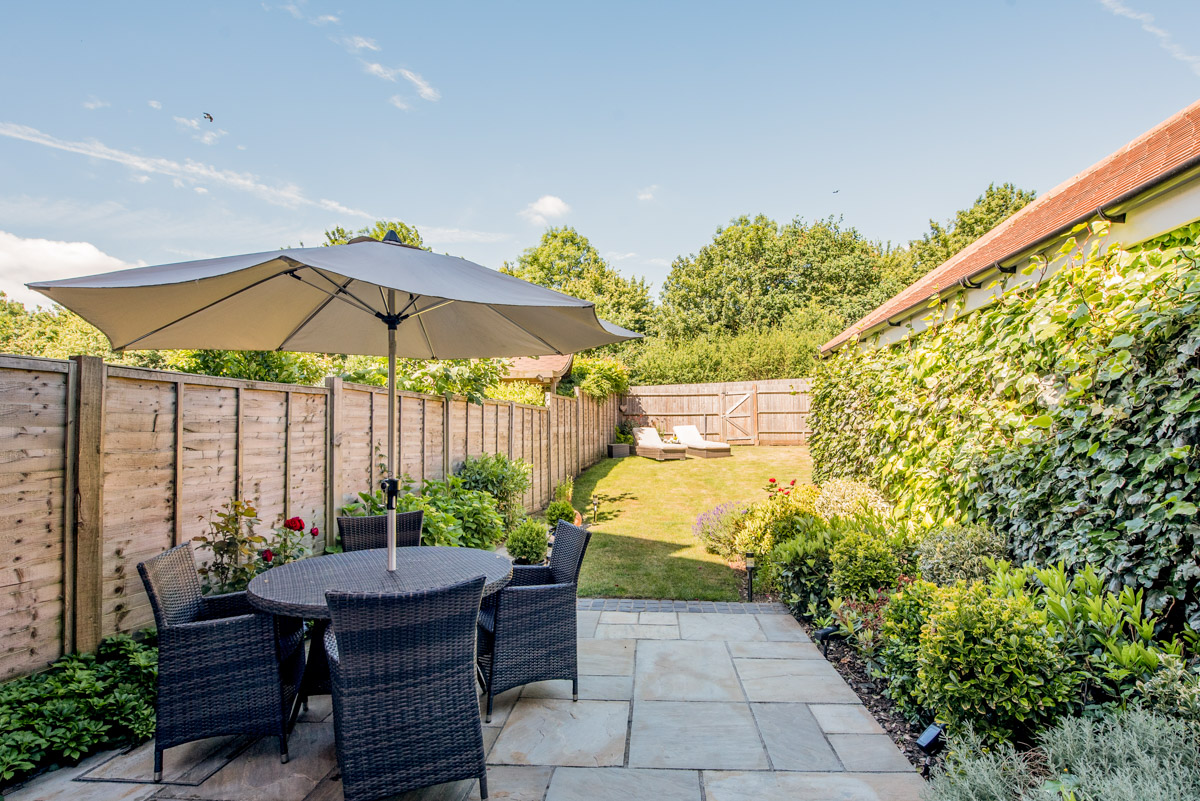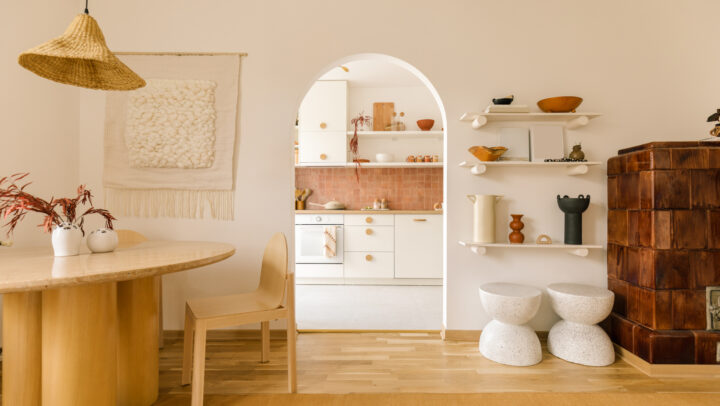Simple Lawn Care Tips for Homeowners
Just starting out, or short on patience? A guide to low-cost, low-maintenance ideas for your yard.

Written by Angela Tague on March 2, 2022
Whether you're just getting settled, or you’ve lived in your home for a while, you probably have a running to-do list for your home, from rooms to arrange and to monthly chores — not to mention a whole lawn to care for. Whether you have a sprawling rural acreage or a quaint city bungalow, it's going to need attention. Thankfully, you can invest as little or as much time as you'd like into beautifying the outside portion of your property.
If you're a self-proclaimed brown thumb, have no fear. These minimalist lawn care tips will ensure your landscape looks fabulous, maintains property value and has curb appeal without much maintenance or money invested.
Take advantage of a blank canvas
The dormant days of winter make it easy to form a mental image of your ideal lawn and garden. Walk around your property with an open mind, take pictures and note any areas that need sprucing up.
It's best to sketch a map, paying attention to landmarks such as mature trees, garden sheds and decorative boulders that will stay put. Mark areas that seem extra moist, overly dry, low-lying, steep, shady or sunny. This will help you pick the perfect plants as you read plant labels (and their care instructions!) at the garden center (and avoid purchasing the beautiful plants you love, but just don't work with your yard).
You might also consider hiring a local landscaper to help identify concerns or ways to enhance the space. They can share how to turn low-spots into flower gardens or how to use decorative rock, mulch and bricks to add interest to the yard. But, the best part of talking with a pro is their acute knowledge of local plants and what will grow best in that muddy patch by your bedroom window or the bare spot under the evergreen tree. They’ll also have suggestions about which plants work best based on how much gardening time you actually have.
Tip: Sometimes local garden centers will design a landscape for you for free or at a lower cost if you agree to purchase the plants through them. If your home shares a property line with a friendly neighbor, they can also be an amazing (free!) resource. They've been working with the local soil and can point you in the direction of what grows best, how heavy rains affect the area and what to expect each season as the weather shifts.
Get excited about the right plants
Now that you know the lay of the land, learn more about what yards in your area typically need to thrive and some basic maintenance tips, like weed control and watering schedules. Consider taking a class at your local garden center, community college or landscaping shop. Sometimes city grounds departments will even offer free courses, and you can also find plenty of free yard maintenance and gardening tutorials online.
Unless you're working with a new and treeless lot, each part of your yard is unique. For example, the north side of your home probably isn't the best place for that rose garden you envisioned because it barely receives direct sunlight.
Instead, grow shade-loving plants like ferns, lilies or violets. Or, ask a neighbor what grows best in various spots of their yard. They may even offer a free cutting or two when they thin out their gardens.
If that mailbox garden seems to sizzle and suffer no matter what you do, stop watering those poor, misplaced ferns and replace them with colorful wildflowers that thrive in dry, sunbaked conditions. Plus, your water bill will decrease as your curb appeal increases.
Once you know the amount of shade, drainage and moisture your area receives, choose native annual plants that will flourish in your climate year after year. Why? This means healthy, low-maintenance lawn care for you! After all, nobody wants to spend time and money replacing plants season after season. Plant smart! Plant once!
Tip: A quick online search will educate you on the invasive plant species in your state. Be sure to avoid planting those! Invasive vines, weeds and trees can quickly take over all areas of your lawn and become a headache.
Keep your garden placement convenient
Are you starting to get more excited about your new outdoor space? Excellent! That back corner behind the garage might be the perfect place for a vegetable garden, but not if you're too busy to make it back there. Out of sight, out of mind, as they say.
If there's ample sunlight, plant flower and vegetable gardens near walkways and patios where you can easily water and weed them. You'll also get to watch their growing progress as you come and go.
Another easy solution for beginning gardeners on a budget is container gardens. These can easily be placed on a front step or backyard deck for easy access. Select containers as big or small as you want, and fill them with simple growers like tomatoes, strawberries or colorful annual flowers. Again, asking a few questions of the employee at your local garden center will guide you in the right direction. Then, be sure to browse the clearance racks at the back of the store for bargains. Your town may also offer a seed library (often found in the public library) where you can get free seeds in exchange for bringing seeds back after your new plants grow.
Weed-proof your lawn and garden
Once you get your lawn looking lovely, keep it that way. Prevent weeds from returning in the areas without grass, concrete or rock in spring by removing any existing weeds by the root (pull or use a spade), layer the area with weed barrier paper, then add a few inches of mulch or rock. The area will have a neat, clean appearance and become maintenance-free.
Plant low-maintenance ground covers, like decorative grasses and clovers, for a longer-lasting and more attractive solution. You'll still need mulch for the first year or two, but the plants will soon form a weed-blocking carpet of green that rarely needs replacing. Ground cover can often be started by seed, which is lower in cost than potted starter plants.
Divide and conquer to save money
Here's one last money-saving trick: Choose a perennial, bulb or ornamental grass that can be propagated by division — one that you'd love to see growing all over your yard in a few years. Plant several of them in your garden. After a couple of years, divide the plants by digging them up and slicing through the middle with a sharp spade. For best results, do this in fall when the weather is cool, and the plant is not actively growing.
Plant the divisions in the ground again, then water them thoroughly to help them take root. Repeat these steps every two years, and you'll have not only a ton of free plants but also a garden that looks cohesive and established.
By spending a few hours each weekend outside, you'll have a gorgeous exterior space that shows your pride in homeownership.



